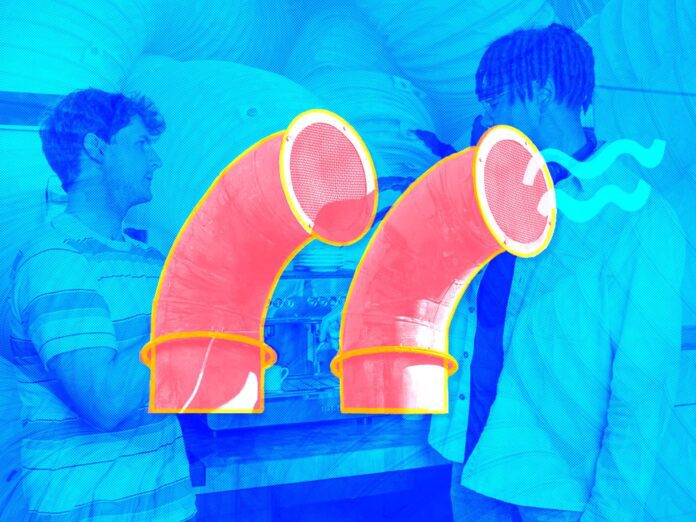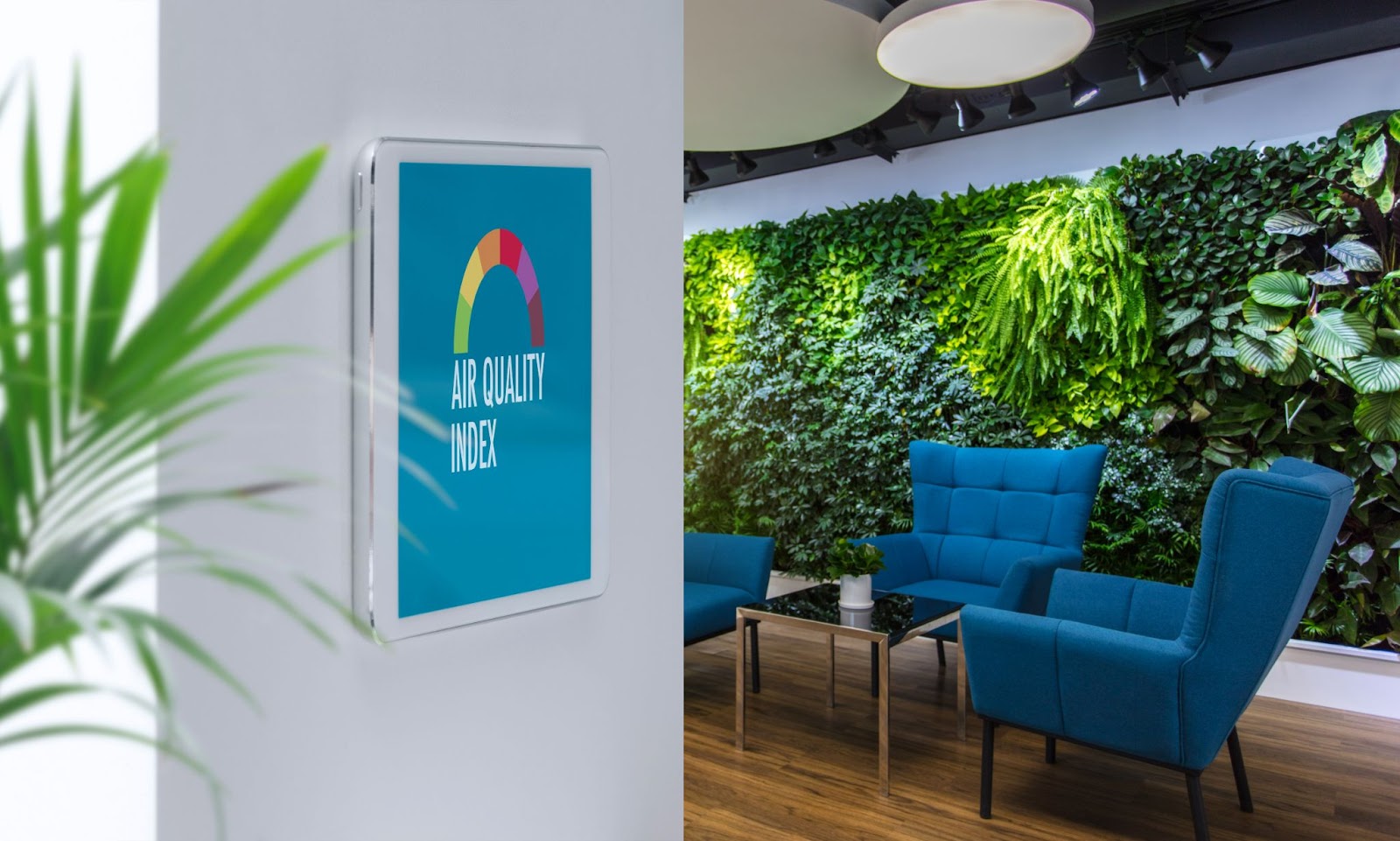Smart Buildings for Indoor Smart Air Quality Monitoring

Digital transformation by itself is not that exciting, nor does it motivate people unless it is connected to a bigger purpose. Post COVID-19, when employees are still wondering whether to return to their workplaces, send their children to school, or travel to their favorite destinations, the office buildings, educational institutions, and airports are under heavy scrutiny for the highest performance standards. The health of these spaces and the indoor air quality of these buildings are under a tight spotlight. Smart air quality monitoring is a helpful solution. With climate change and greenhouse gas emissions, new and fresh thinking is needed from every global citizen who can play a role towards sustainability that reduces the impact on the environment and climate change.
'Indoor air quality plays an important role in the overall health and well-being of building occupants as well as the environment.' -WaylayClick To Tweet

Challenges to the Office Space
As office space workers and tenants are coming back to the buildings with great expectations, the building owners, landlords, and employee health and safety officials have to provide adequate measures and transparency toward clean, healthy buildings and are required to promptly respond to occupants’ requests. The?US Green Building Council,?EPA,?and?LEEDS?have converged to create a common set of indoor air quality standards that are governed by a key set of parameters such as:
- CO2:?A natural compound in the air with an average outdoor concentration of 300-400ppm. The indoor levels are higher. Anything beyond 900ppm can be considered not healthy. Future smart buildings should keep the CO2 level close to 600ppm.
- CO:?It is an odorless and colorless lethal gas and is one of the most dangerous compounds in the indoor environment. The?National Institute for Occupational Safety and Health?(NIOSH) has recommended an exposure limit of 35ppm for an eight-hour workday.
- VOC:?Volatile organic compounds are chemicals found in many products we use in our daily lives. They can irritate the eyes, nose, and throat, and cause difficulty breathing. They are emitted by many common building materials, including carpeting, hardwood flooring, upholstery and even marble surfaces.
- PM2.5:?Particulate matter is a dangerous form of pollution as the size of the particle is so small (2.5 micrometers or less in diameter) that it can get into the lungs causing many adverse effects. Their threshold limit value is 25 μg /?3.
- Radon:?It is a radioactive gas formed by the decay of natural Uranium in the soil. It is carcinogenic and EPA recommends a level limit of 4 pCi/L.?
Solution Guidelines
LEED provides a framework for healthy, efficient, carbon, and cost-saving green buildings. They are a critical part of addressing the healthy buildings, climate crisis, and meeting ESG goals. The?ASHRAE?(American Society for Heating, Refrigerating, and Air-conditioning Engineers) advances the heating, cooling, and ventilation design of buildings. Both of these frameworks play a role in how we design, operate, and service future smart buildings and today’s buildings that can be retrofitted with IoT sensors for smart air quality monitoring.
Let’s take a look at an example of how spaces in a building can be automated for LEED-certified indoor air quality based on how the building is occupied.
Air Quality Monitoring Example
We will build a building occupancy and floor area-based automation control function to regulate indoor air quality based on ANSI/ASHRAE 62.1 – 2019 standards. The purpose of the ASHRAE standard is to specify minimum ventilation rates and other measures intended to provide indoor air quality (IAQ) that is acceptable to human occupants and that minimizes adverse health effects.
The occupancy density and floor area of a space drive the outdoor airflow intake that is required in the breathing zone (Vbz) of the occupiable space. The amount of fresh outdoor air required for the ventilation zone should not be less than the value determined in the following equation:
Vbz = Rp * Pz + Ra * ?Az
- Az = zone floor area, the net occupiable floor area of the ventilation zone, ft2 (m2)
- Pz = zone population, the number of people in the ventilation zone during use
- Rp = outdoor airflow rate required per person
- Ra = outdoor airflow required per unit area
Let’s assume there is an office building of Waylay in Austin, Texas with the following floors/occupiable spaces.
- Floor 1: Main entry lobby (2,000 sq. ft.), Breakroom (1,000 sq. ft.), Office Space (3,000 sq. ft.)
- Floor 2: Breakroom (1,000 sq. ft.), Office Space (3,000 sq. ft.

Anomaly Condition:?Assume the breakroom occupancy count reached 70 during a company event when employees from different organizations gathered to meet and eat lunch together. This event triggers an exceed in the occupancy threshold of 50 per 1000 sq. ft.?The condition persisted for 1 hour (12 pm – 2pm CST) and then occupancy fell below the threshold (50) by 3pm CST. Then the occupant density finally reached zero by 6:00 pm CST. The ventilation rate needs to be adjusted at every threshold crossing and then set to a minimum threshold for zero occupancy. Additionally, for energy conservation, the lights will need to be turned off in the breakroom when there is no occupancy.

Low-Code Implementation
- Model a resource, Waylay Austin. Create resources floor 1 and floor 2 as children of resource ‘Waylay Austin’ building.
- Model a resource breakroom 1 as a child resource of floor 1 and another breakroom 2 as a child resource for floor 2.
- Create metadata attributes (area_sqft) with value = 1000 for resources breakroom 1 and breakroom.
- Create meta data attribute (area_sqft) with value = 2000 for resources lobby 1 for floor 1.
- Write a rule to run against the breakroom 1 of floor 1 where the occupancy sensor of breakroom 1 sends the data shown on the above table.
Start with occupancy density (medium = 40) where no thresholds are exceeded, and set the HVAC control system ventilation_rate to 320 cfm. Then, after some time at 12pm CST, occupancy increases to 70 and exceeds the threshold (50). At this time, we increase the ventilation_rate to 470 cfm. Send a command to the VAV controller to supply extra air to the space by 470 cfm – 320 cfm = 150 cfm or +46 percent extra air supply. Also, raise a WARNING alarm (occupancy in the breakroom of building A / floor 1 has exceeded the capacity threshold) for the facility manager.
Then, when the occupancy goes down to 50, reduce the ventilation_rate (air supply) to 370 cfm. When the occupancy goes down to zero, then reduce the ventilation_rate to 120 cfm or a difference of 370 cfm – 120 cfm / 370 cfm = -67.5% percent.
Smart Air Quality Monitoring Importance
Indoor air quality plays an important role in the overall health and well-being of building occupants as well as the environment. Poor air quality in the buildings can lead to numerous adverse health problems, such as nausea, headaches, breathing problems such as asthma, skin irritations, and even cancer. In fact, since people spend almost 90 percent of their time indoors, indoor air quality has a significant impact on people’s health and productivity.?
On the other hand, data from the?U.S. Department of Energy?shows buildings account for 40 percent of all U.S. energy use and waste 30 percent of the energy they consume. Therefore, the balancing act of energy consumption and wastage against indoor air quality can be maintained by strictly following the ANSI/ASHRAE and LEED guidelines. This is achievable through hyperautomation systems which can sense the real-time occupant capacity, indoor air parameters, and air flows in various building zones, and converge them with contextual data from IT systems, outdoor air quality, and occupant feedback in real-time.
Tweet
Share
Share
- Automation
- Building Automation
- Digital Transformation
- Health and Wellness
- Sensors
- Automation
- Building Automation
- Digital Transformation
- Health and Wellness
- Sensors
